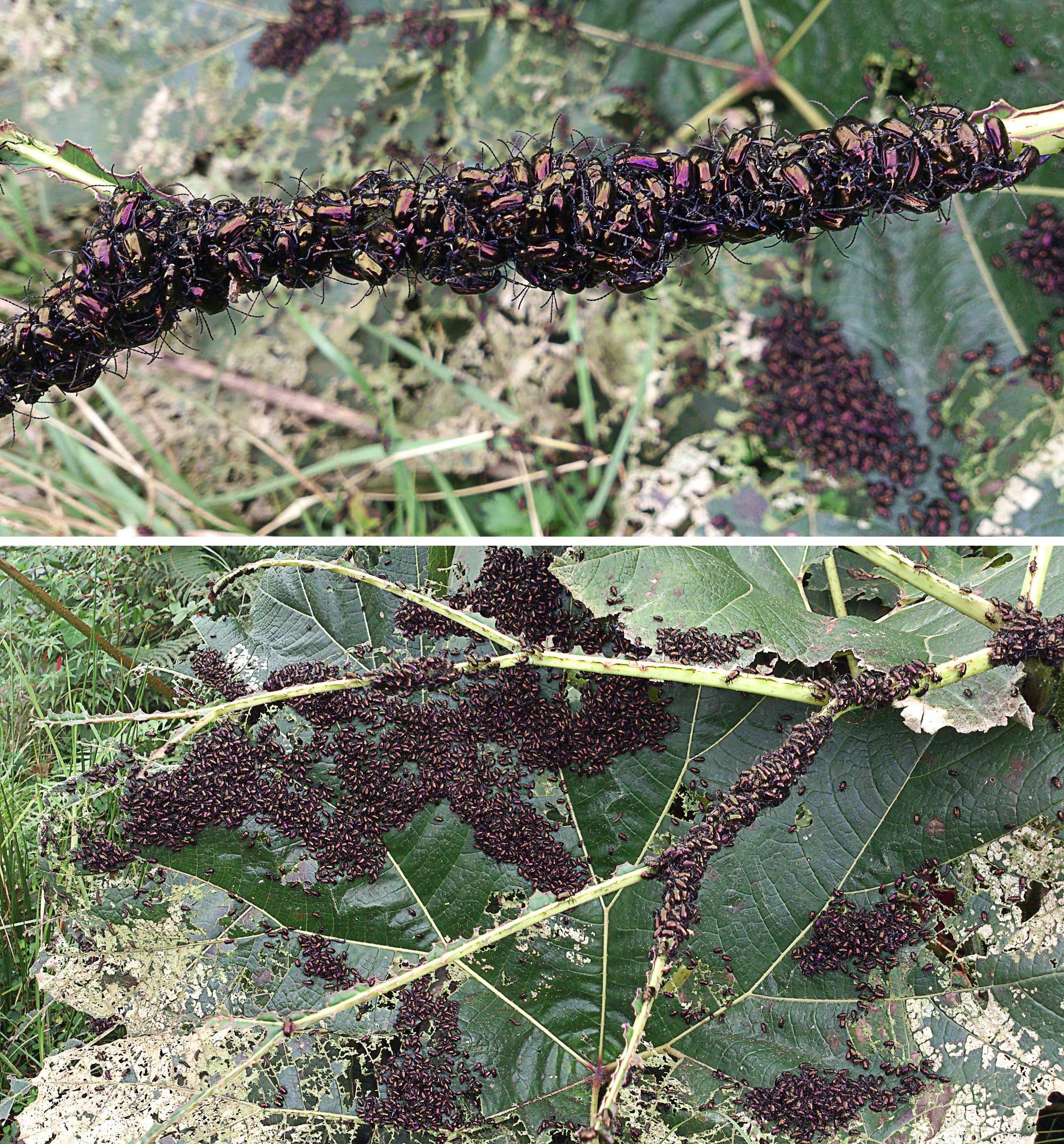Abstract
Neotropical beetles of the genus Macrohaltica form aggregations exceeding 5000 individuals, but there are no studies testing the four hypotheses available to explain why. Based on the better studied Opiliones aggregations, I propose that Macrohaltica aggregations were selected for three of the reasons proposed by William Eberhard and colleagues in 1993: enhanced defense against parasites and predators; keeping adequate moisture and temperature; and facilitating mating. Additionally, also based on Opiliones, I suggest that two unreported behaviors may occur: males occupying the exposed parts of groups; and females leaving the aggregation after mating.
References
Eberhard, W., Achoy, R., Marín, M. C., & Ugalde, J. (1993). Natural history and behavior of two species of Macrohaltica (Coleoptera: Chrysomelidae). Psyche: A Journal of Entomology, 100(1-2), 93-119.
Eberhard, W. G., & Kariko, S. J. (1996). Copulation behavior inside and outside the beetle Macrohaltica jamaicensis (Coleoptera, Chrysomelidae). Journal of Ethology, 14(1), 59-72.
Hilje, L., & Coto, D. (1996). Gregarismo en Macrohaltica sp. (Coleoptera: Chrysomelidae). Brenesia, 107, 41-42.
Machado, G., & Vasconcelos, C. H. F. (1998). Multi-species aggregations in Neotropical harvestmen (Opiliones, Gonyleptidae). Journal of Arachnology, 26, 389-391.
Santisteban, J. (2006). Taxonomic revision of the genus Macrohaltica Bechyne (Coleoptera: Chrysomelidae, Alticinae). Revista Peruana de Entolomogía, 45(1), 27-64.
Wijnhoven, H. (2011). Notes on the biology of the unidentified invasive harvestman Leiobunum sp. (Arachnida:Opiliones). Arachnologische Mitteilungen, 41, 17-30
Wijnhoven, H., Schönhofer, A. L., & Martens, J. (2007). An unidentified harvestman Leiobunum sp. alarmingly invading Europe (Arachnida: Opiliones). Arachnologische Mitteilungen, 34, 27-38.


